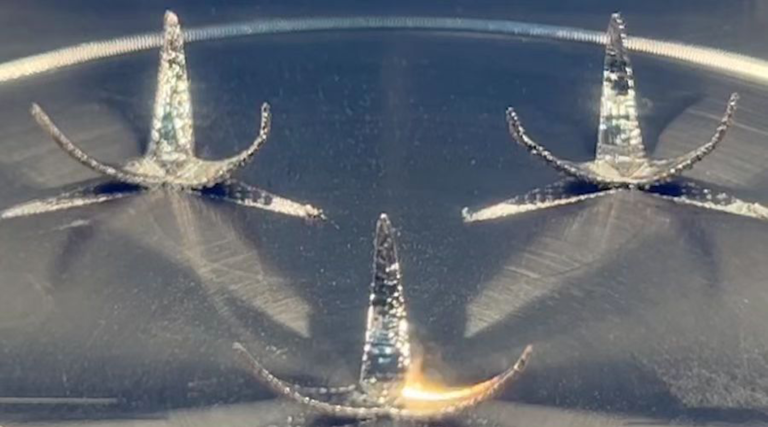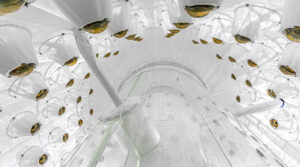Researchers take a different approach to machine learning to uncover the physics of optics in composite materials.
Composite materials having two or more dissimilar components can be used in many areas of modern science and technology. One of the most important applications they have is in optics, where these materials are enabling future miniaturization of lenses, lasers, and detectors — the basic technologies that underly telecommunications, imaging, and sensing.
To find an optical composite structure appropriate for a given problem, scientists must know how light propagates in the material, but solving the equations of optics in a multilayer medium is difficult both analytically and numerically.
In a recent study published in Advanced Photonics Research, researchers developed a machine learning-based technique that can cope with problems of this kind very efficiently, computing the light rays’ trajectories in a given composite material.
How to teach machines
Machine learning is a data analysis method that allows software to learn from input data and identify patterns. In recent years, it has become a part of our daily lives — machine learning powers image recognition, automatic translation, self-driving, and even predicting battery performance and drug discovery, and so on. In a majority of these applications, an algorithm is trained on enormous amounts of “labeled data” — millions of images with marked people, cars, bicycles or whole books annotated with their translations.
“Machine learning can be used in the scientific domain as well,” said Viktor Podolskiy of the University of Massachusetts Lowell, one of the authors of the study. “Here, it is usually called to predict the solution to some equation or the result of the experiment. Typically, to be used efficiently, machine learning needs to be trained on the library of known solutions or on results of prior experiments. Given enough prior data, machine learning seems to do well.”
However, in this conventional scenario, called the “black box” machine learning, researchers ignore the scientific knowledge that humanity has accumulated over the centuries, and use just input/result pairs to train the computer. In a sense, the physicists’ understanding of how to derive the governing equations and how to solve them just gets wasted. Because of this, in situations where the brute force solutions are difficult, there are not enough data to train machine learning to begin with.
Shining a light on composite materials
The problem of light propagation in multilayer materials, where the layers have different optical properties, is precisely of this kind of difficult calculation. To solve it, the authors of the study came up with the idea of physics-informed machine learning, which supplements the usual “black box” algorithms with the known equations of the electromagnetic field dynamics, governing the light propagation.
“Our motivation was to utilize some of the ‘extra’ scientific knowledge in the training process, in a sense combining the benefits of both science and machine learning,” Podolskiy explained.
The model problem the physicists were solving was the light propagation in a ten-layer optical composite. They trained both the “black box” and the physics-informed machine learning algorithms using a dataset consisting of light trajectories in hundreds of composites with different optical properties.
It turned out that the technique they developed was far more efficient and needed a dataset approximately 20 times smaller to reach the same prediction accuracy as the conventional machine learning. An advantage over a numerical solver was even more impressive; trained machine learning algorithms found the light rays’ configurations hundreds of time faster.
“Our results suggest that incorporation of scientific knowledge into [the] training process enables us to train models faster, on a much smaller amount of training data, and produce models that can work correctly on a much wider set of input parameters,” added Podolskiy.
A bright future
The researchers envision that the approach demonstrated in their work can be applied to other problems in optics. They also expect that their method can be further improved and become even more powerful.
“We are currently working on extending our approaches to a wider class of problems, aiming to develop a ‘hybrid’ framework that would speed up analysis of light interaction of composites,” concluded Podolskiy. “The approach would initially employ time-consuming science-based solvers for a few data points and would then use these initial data as a training set for much faster physics-informed machine learning models. We hope that the resulting framework will allow us to run the calculations that used to take weeks in a matter of days or even hours.”
Reference: Viktor A. Podolskiy et al., “Physics-Informed Machine Learning for Optical Modes in Composites,” Advanced Photonics Research (2022), DOI: 10.1002/adpr.202200073













+ There are no comments
Add yours